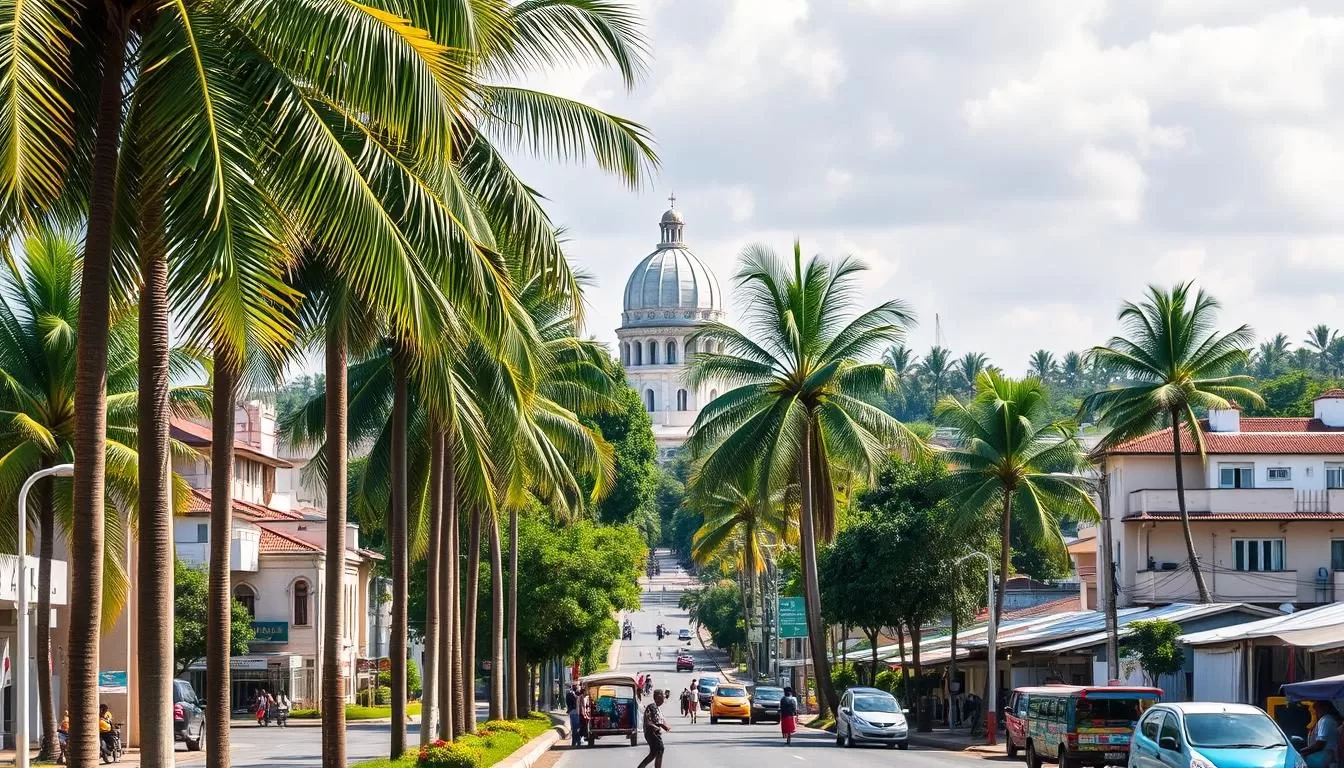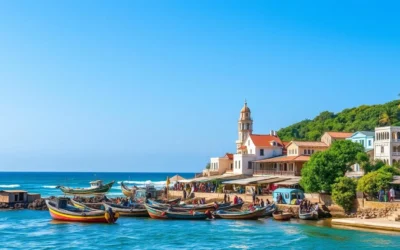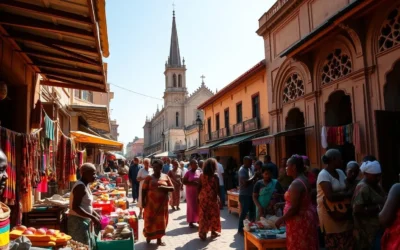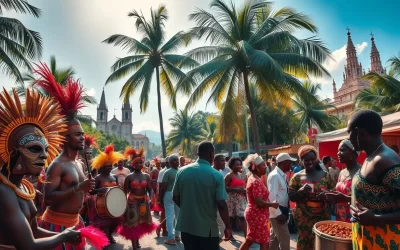✓ Accommodations✓ Flights✓ Rental Cars
As the political capital of Ivory Coast, Yamoussoukro offers a unique blend of monumental architecture and quiet streets, creating an intriguing atmosphere for visitors.
This fascinating destination is perfect for travelers looking to explore the less-touristy side of the country, with its modest accommodation costs and relaxed pace.
The city’s distinct character differs from typical African capitals, making it an interesting case study in urban development. You’ll find grandiose buildings alongside more modest structures, telling the story of ambitious plans and political vision.
As you explore Yamoussoukro, you’ll experience a city of contrasts, where history and culture blend together, creating a unique and memorable experience.
Discovering Yamoussoukro: Ivory Coast’s Unique Capital
As you explore Yamoussoukro, you’ll uncover a city that embodies both grandeur and desolation. Serving as the capital of Ivory Coast since 1983, Yamoussoukro is a place where monumental architecture stands alongside decaying infrastructure, creating a unique experience for visitors.
The Story Behind Yamoussoukro
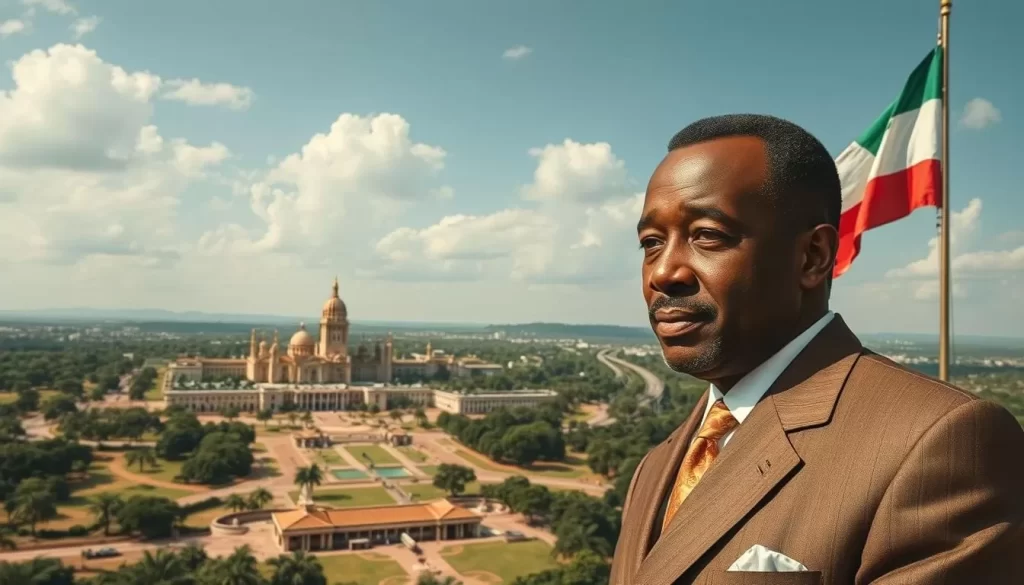
Yamoussoukro’s fascinating history begins with its transformation from a small village to the capital of Ivory Coast in 1983, a decision made by the country’s first president, Félix Houphouët-Boigny, who was born there. This transformation represents an ambitious vision that has only been partially realized over the years.
When to Visit and What to Expect
The best time to visit Yamoussoukro is during the dry season, from November to March, when temperatures are more comfortable and rainfall is minimal. Your experience in this Ivory Coast capital will likely differ from other West African capitals, as the city maintains a surprisingly quiet atmosphere despite its official status. You can expect a mix of architectural grandeur and everyday Ivorian life, with wide avenues that sometimes feel eerily empty compared to the bustling streets of Abidjan. Budget travelers will appreciate that Yamoussoukro offers reasonable costs, with daily expenses averaging between $30-50, making it an accessible destination for those exploring Ivory Coast.
The Basilica of Our Lady of Peace: A Marvel of Architecture
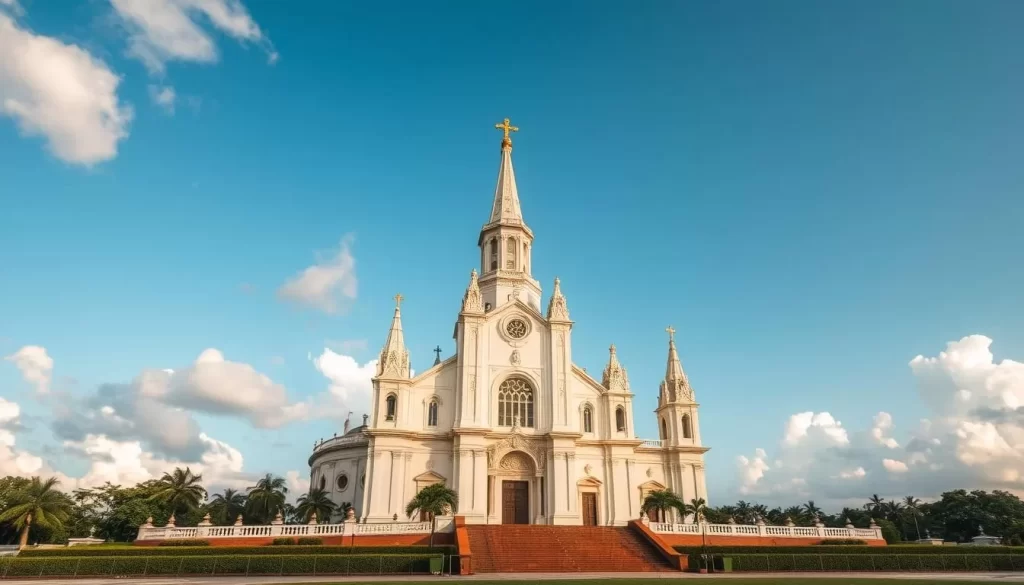
As you approach the Basilica of Our Lady of Peace, the sheer scale of this architectural wonder becomes apparent. Completed in 1990, this magnificent structure is modeled after St. Peter’s Basilica in Vatican City but boasts larger proportions and a dome more than double the diameter, making it the largest church in the world.
The World’s Largest Church
The Basilica of Our Lady of Peace is not just a place of worship but an architectural marvel that has garnered international attention. With a maximum capacity of 18,000 people, including a 7,000-seat nave, it is an awe-inspiring sight. Despite its grandeur, the average number of visitors is relatively low, mainly due to its location outside the downtown area of Yamoussoukro.
The basilica’s construction was not without controversy, given its immense cost, estimated to be as high as half a billion US dollars, in a country where a significant portion of the population lives on less than $3 a day. Nonetheless, the basilica remains an unmissable landmark and a testament to the city’s ambitious architectural endeavors.
Visiting Tips and What to See Inside
When visiting the Basilica of Lady Peace, arriving in the morning is recommended, as the light streaming through the stained glass windows creates a breathtaking atmosphere. Consider joining a guided tour to gain insights into the building’s history and architecture. Inside, you’ll find intricate details, an ornate altar area, and a remarkable nave that can accommodate thousands of worshipers.
Remember to be respectful during services, as the basilica remains an active place of worship. Photography is permitted, allowing you to capture the beauty and grandeur of this world-renowned landmark.
Yamoussoukro’s Fascinating Lakes and Wildlife
In the heart of Yamoussoukro, a captivating blend of nature and culture awaits. The city’s unique wildlife experience is centered around its artificial lakes, which are home to sacred Nile crocodiles. These lakes are not just a natural wonder but also hold significant cultural importance for the local Baoulé people.
Lac de Yamoussoukro and Its Sacred Crocodiles
The artificial lakes of Yamoussoukro, located at the heart of the city, offer a one-of-a-kind wildlife experience that you won’t find elsewhere in Ivory Coast. The lakes are surrounded by the presidential palace area, serving as both decorative elements and homes to dozens of massive crocodiles venerated according to local traditions. According to legend, the Baoulé people, who originated in Ghana, were able to cross a river on their way to Ivory Coast thanks to a row of crocodiles that formed a live bridge.
The Nile crocodiles, each weighing almost one ton, are a major attraction. Their daily feeding routine at 5 p.m. is a spectacle that draws both locals and tourists. Although safety measures have been enhanced following past incidents, visitors can still witness this fascinating display of nature.
Best Viewing Spots and Safety Precautions
When visiting the lakes, you can observe the crocodiles from designated viewing areas equipped with protective barriers, ensuring a safe experience. To make the most of your visit, follow safety precautions such as maintaining a safe distance from the water’s edge and never attempting to feed the crocodiles yourself. Local guides are available to provide insights into the behavior of these sacred animals, enhancing your overall wildlife experience in this unique area surrounded by water features.
By exploring Yamoussoukro’s lakes and wildlife, you’ll gain a deeper understanding of the connection between nature and culture in this part of Ivory Coast, making for a memorable experience.
Cultural and Historical Landmarks
As you explore Yamoussoukro, you’ll discover a blend of cultural and historical sites that showcase the city’s unique identity. The city’s diverse heritage is reflected in its numerous landmarks, each telling a story about Ivory Coast’s history and culture.
The Grand Mosque of Yamoussoukro

The Grand Mosque of Yamoussoukro is a significant cultural and religious landmark, commissioned by the country’s first president, Félix Houphouët-Boigny. Located in the heart of the city, it represents the substantial Muslim population of Ivory Coast. The mosque’s architecture is notable for its latticed façade and impressive minarets, contributing to Yamoussoukro’s unique skyline.
Visitors are required to remove their shoes and, for women, cover their heads as a sign of respect. The mosque is not only a place of worship but also a testament to the culture and architecture of the region, reflecting the country’s religious diversity.
Fondation Félix Houphouët Boigny

The Fondation Félix Houphouët Boigny is another significant landmark in Yamoussoukro, showcasing the legacy of Ivory Coast’s first president. The foundation’s headquarters, built over a decade and inaugurated in 1997 under UNESCO’s auspices, is an architectural marvel that dominates the city’s landscape.
The foundation complex features an imposing rectangular structure and an octagonal conference building, adorned with extravagant decorations including colossal columns and flamboyant chandeliers. Tours are available for 1,500 CFA francs, offering insight into this important cultural institution that represents the president’s dedication to peace and development in Ivory Coast.
Yamoussoukro, Ivory Coast: Best Things to Do Beyond the City Center
Venture beyond Yamoussoukro’s city limits to discover the Ivory Coast’s natural beauty and architectural marvels. The areas surrounding the city offer a refreshing contrast to the urban environment and provide a more comprehensive experience of the region.
Marahoué National Park Day Trip
Just a two-hour drive from Yamoussoukro lies Marahoué National Park, one of the Ivory Coast’s eight national parks. Established in 1968, the park covers approximately 1,000 square kilometers, providing a habitat for various wildlife such as duikers, African buffalo, and numerous bird species. Despite facing challenges from deforestation and poaching, Marahoué remains a worthy destination for nature lovers.
Visiting Marahoué National Park not only offers a chance to explore the Ivory Coast’s natural beauty but also contributes to conservation efforts. By supporting tourism, you help create a sustainable alternative to agricultural encroachment that has threatened the park.
- Take a day trip to Marahoué National Park, located just a two-hour drive from Yamoussoukro.
- Explore the park’s diverse wildlife, including duikers, African buffalo, and various bird species.
- Contribute to the conservation of Marahoué by supporting local tourism.

The National Polytechnic Institute
The National Polytechnic Institute, located in the northern periphery of Yamoussoukro, is another fascinating destination. Founded in 1966, the institute is known for its grandiose architectural style, reminiscent of the city’s monumental buildings. The campus is divided into three parts—north, central, and south—separated by a lake and lush woodland, making it a unique blend of education and natural beauty.
The institute’s architecture is noteworthy, featuring a giant free-standing arcade and an octagonal main building. For architecture enthusiasts, a visit to the National Polytechnic Institute is a must, offering insights into the region’s educational infrastructure and design.
- Visit the National Polytechnic Institute to admire its unique architecture.
- Explore the three campuses, each with its distinct features and surroundings.
- Learn about the institute’s history and its role in Ivory Coast’s education system.

Practical Travel Tips for Visiting Yamoussoukro
As you prepare to visit Yamoussoukro, Ivory Coast, understanding the best times to visit, how to get around, and what to expect can greatly enhance your travel experience and provide valuable travel tips. The best time to visit Yamoussoukro is during the dry season, from November to March, when temperatures are more moderate and rainfall is minimal, making it easier to explore the outdoor attractions in Ivory Coast’s capital.
Budgeting is a crucial part of planning your trip. You should budget approximately $30-50 per day for your stay, which should cover accommodation, meals, and local transportation, though costs can vary depending on your comfort preferences and the season of your visit. Having multiple travel options can help you manage your expenses effectively.
When it comes to getting around, transportation options within the city are limited, so consider arranging a taxi for the day (negotiate the price beforehand) as the most convenient way to see the major sights, or rent a car if you’re comfortable driving in Ivory Coast. This will give you the flexibility to explore at your own pace and make the most of your time in Yamoussoukro.
It’s also important to be mindful of cultural norms, especially when visiting religious sites like the Basilica or the Grand Mosque. Dress modestly with shoulders and knees covered as a sign of respect. Additionally, remember that the mosque requires women to cover their heads and everyone to remove their shoes. Following these simple tips will help you have a respectful and meaningful visit.
To ensure a safe and enjoyable trip, follow basic security tips such as avoiding walking alone at night and keeping valuables secure. While Yamoussoukro is generally considered safer than many other West African cities, it’s always best to be cautious and stay informed.
Lastly, be prepared for the tropical climate by packing lightweight, breathable clothing, sun protection, and insect repellent. With these practical travel tips, you’ll be well on your way to having a memorable and stress-free visit to Yamoussoukro, enjoying the city’s unique attractions in the best way possible.
The above is subject to change.
Check back often to TRAVEL.COM for the latest travel tips and deals.
